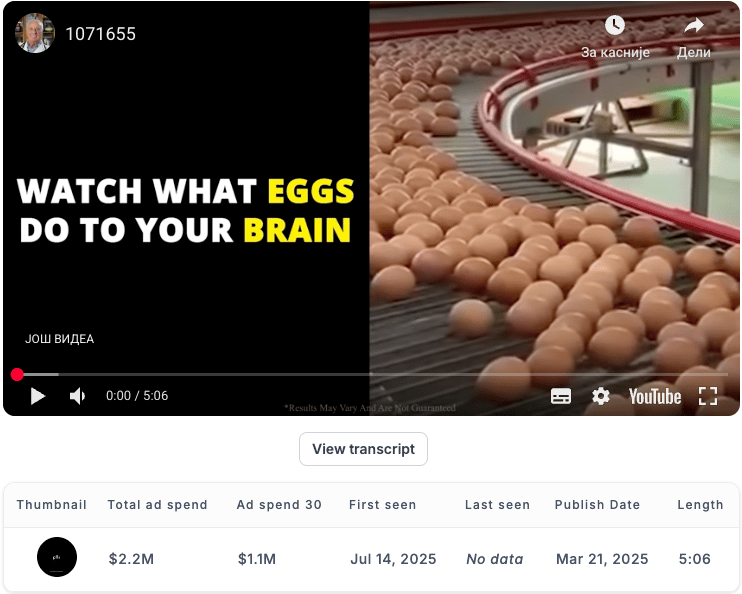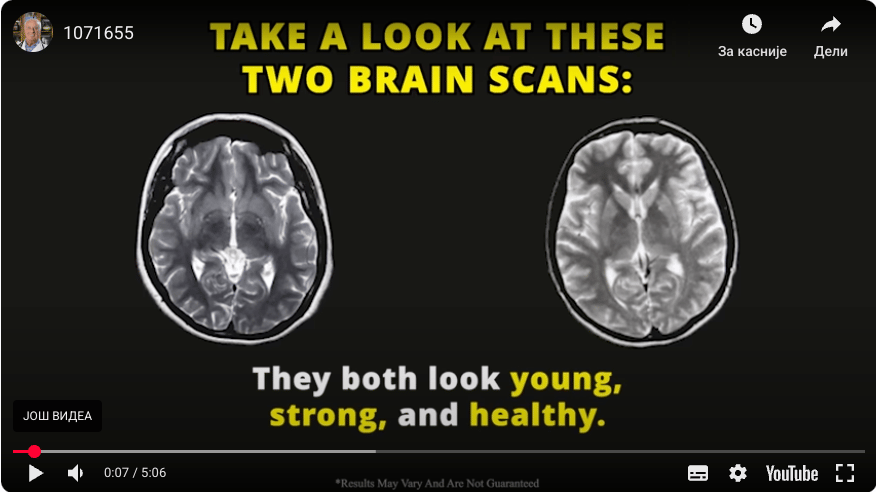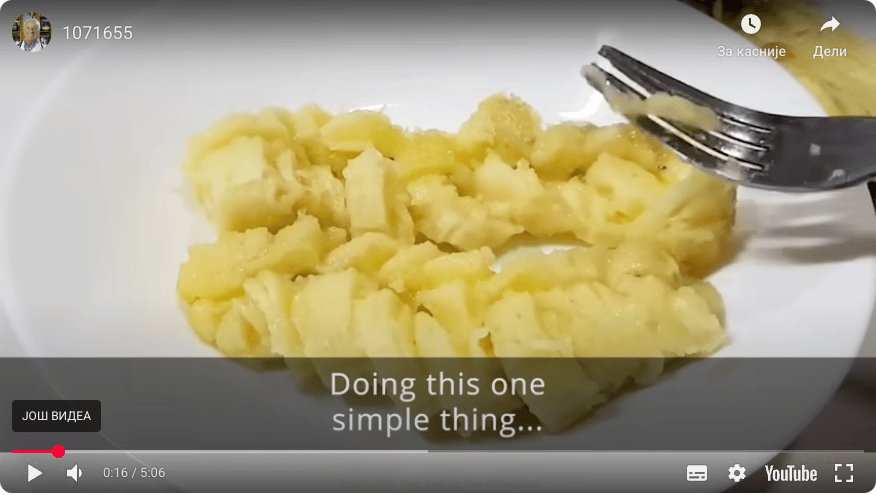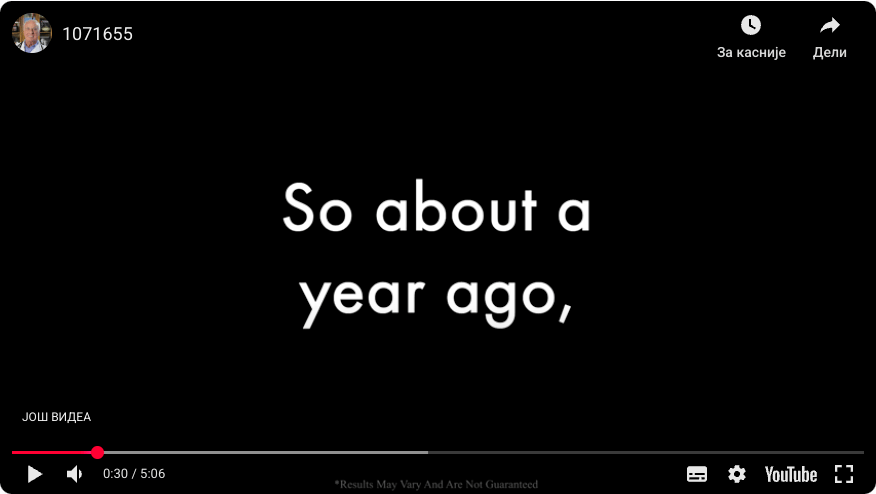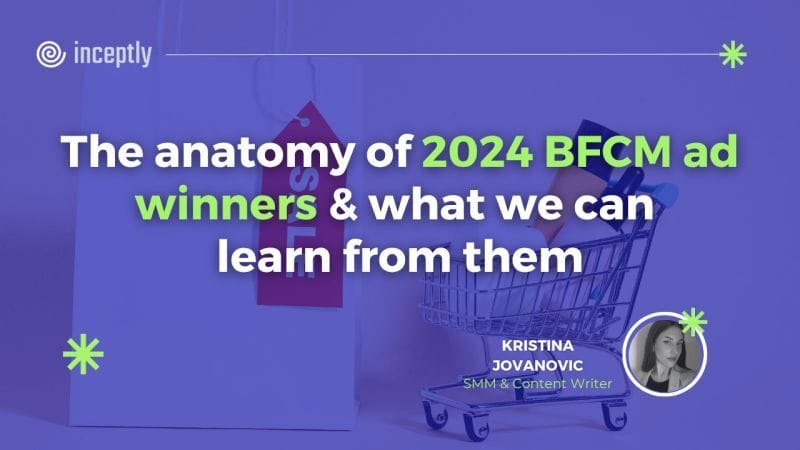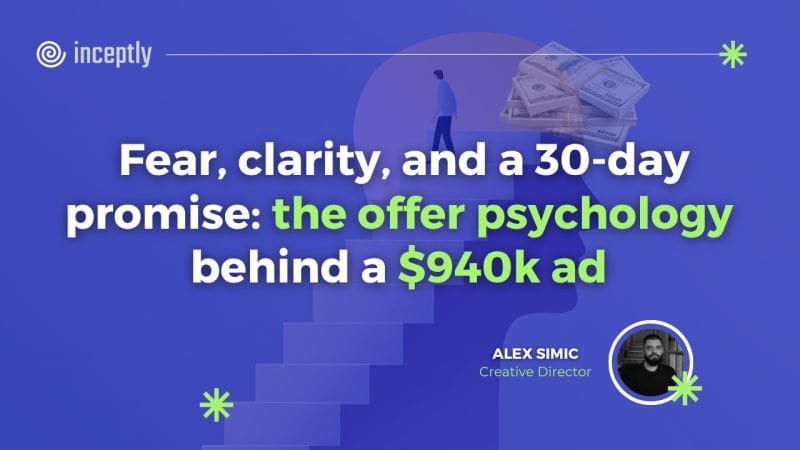- Inceptly
- Posts
- The $2.2M 'Egg Mystery' ad: The opening that makes no sense (and why that's genius)🧠
The $2.2M 'Egg Mystery' ad: The opening that makes no sense (and why that's genius)🧠
"Watch what eggs do to your brain." Those seven words opened a video ad with an estimated ad spend of 2.2 million dollars. Here's what makes it fascinating: The ad never explains what eggs do to your brain. Not once. In the entire 5-minute video, eggs are never mentioned again. |  Author: |
And yet, this "mistake" is actually a masterclass in using fascinations—the curiosity-driven bullets that Stefan Georgi teaches direct response copywriters to master.
Even more remarkable? After the first 30 seconds, this ad switches to nothing but white text on a black background. No fancy visuals. No B-roll. Just words on screen for over 4 minutes.
And people watch until the end.
Let's break down exactly how this ad uses fascination principles to achieve that result.
Want to brainstorm with us on new ways to scale your business with YouTube Ads (and other performance video platforms)?
Join us for a free YouTube ad brainstorming session here:
The bass fishing strategy: Multiple hooks in the water
First, let’s watch the ad:
Stefan Georgi uses a bass fishing analogy to explain how fascinations work:
The big hook = Your main promise
The little hooks = Your fascinations
The genius is this: Even if prospects swim past your main hook (they're not interested in brain health), one of your little hooks (the egg mystery, the 97-year-old woman's secret, the NASA scientist) might snag them.
This ad deploys 7 distinct fascinations in the first 30 seconds alone.
Why? Because they're fishing for multiple types of prospects simultaneously.
Fascination stacking: The first 30 seconds breakdown
Let's analyze the opening fascination cluster:
- The "What" bullet:
"Watch what eggs do to your brain"
This is a classic "What Bullet" - it teases unknown information about something familiar (eggs). Everyone eats eggs. Everyone has a brain. The connection between them creates instant curiosity.
Notice: It shows eggs on a conveyor belt. Visual + verbal fascination = double impact.
- The visual proof fascination
"Take a look at these two brain scans. They both look young, strong, and healthy..."
This isn't just telling—it's showing. Two brain scans appear on screen. This creates a "pattern interrupt." You're expecting more about eggs, but instead you get brain scans.
- The contrarian bullet
"But only one of them is young. The other is the brain of a 97-year-old woman."
This is a Contrarian Bullet—it challenges what you just saw with your own eyes. Both scans looked healthy, but one is from someone nearly 100 years old. This violates expectations, which creates powerful curiosity.
- The "Secret" bullet
"Her secret? Doing this one simple thing each night before bed."
Classic Secret Bullet structure. Something is hidden. Something is simple. Something happens at a specific time (night, before bed). Three fascination layers in one sentence.
- The "If-Then" qualifier
"I'm not sure if this might interest you, but if you or a loved one is often forgetting things or suffering from brain fog..."
This isn't technically a fascination, but it's a brilliant positioning. It qualifies the viewer while using the "if-then" structure that Georgi discusses. It makes the prospect self-identify: "Yes, that's me" or "That's my mom."
- The promise fascination
"...then I've got something important to share with you."
This creates anticipation. "Something important" is vague enough to maintain curiosity while specific enough ("important") to keep attention.
The bait-and-switch alpha strategy
Here's what makes this opening extraordinary:
The egg fascination never pays off.
In fascination terminology, this is an "open loop" that never closes. Normally, this would be bad copywriting. You create curiosity, you must resolve it.
But this ad proves otherwise.
Why does it work?
Because the egg fascination is pure bait. Its only job is to stop the scroll. Once you're hooked by the egg mystery, the ad immediately deploys 6 more fascinations to keep you watching.
Think of it like a relay race—the egg fascination gets you to watch the first 3 seconds. The brain scan fascination carries you for 10 seconds. The 97-year-old woman carries you for 15 seconds.
By the time you realize eggs were never explained, you're already invested in the story about the husband's dementia diagnosis.
The transition: When fascinations become a story
At the 30th second, something shifts.
The ad moves from rapid-fire fascinations to emotional narrative:
"So about a year ago, my husband came home from his doctor's appointment and he had this note that totally knocked me down..."
This is critical to understand: You cannot sustain 5 minutes on fascinations alone.
The opening fascination cluster does its job—it stops the scroll and builds curiosity. But to hold attention for 5 minutes, you need story + emotion + periodic fascination reloads.
The dementia diagnosis story provides:
Emotional resonance (fear, empathy)
Relatable villain (the doctor's note, the disease)
Stakes (dreams destroyed, nursing home, 24/7 care)
This isn't just good storytelling. It's a strategic fascination architecture.
The middle section: Story punctuated by named oddities
Then the ad tells the husband's story. But notice how it strategically deploys fascinations to maintain curiosity:
- The named oddity fascination
"After a lot of tests, my husband's brain was all clogged up. It had plaques..."
"Plaques" is a Named Oddity—it gives a specific, memorable name to the problem. This is more powerful than saying "his brain wasn't working well."
The word "clogged" creates a visual. You can picture a clogged drain. This makes an abstract problem (dementia) concrete and understandable.
- The tangible enemy
"It was literally suffocating his brain."
"Suffocating" is visceral. You can feel it. This transforms medical jargon into physical sensation.
- The "Never" bullet
"And the scary thing is, if you just ignore forgetfulness and brain fog and do nothing about it for too long, the damage could be irreversible and devastating."
This is a Never Bullet in disguise—it warns what NOT to do (ignore it). It creates urgency through fear of loss.
At 2:07, the ad introduces a new fascination type:
"We saw a program on TV about an award-winning doctor, Dr. Sam Walters, who is a former NASA scientist..."
This is brilliant for three reasons:
Credibility stacking: Award-winning + doctor + NASA scientist
Borrowed authority: NASA carries massive credibility
New curiosity: What did this NASA scientist discover?
Then comes the Contrarian Bullet:
"He discovered that memory loss and dementia have actually nothing to do with aging or even genetics."
This violates conventional wisdom. Everyone "knows" memory loss comes with aging. This fascination says, "Everything you believe is wrong."
- The list bullet as a villain
"Instead, it's caused by the consumption of five neurotoxic chemicals used extensively within the American food industry."
This is a List Bullet (five chemicals) combined with a conspiracy (food industry). It creates multiple curiosity threads:
What are the five chemicals?
Which foods contain them?
Why is the food industry using them?
The counterintuitive lesson: Confusion creates consumption
Here's what most marketers get wrong about video ads:
They think clarity wins.
"Be clear, not clever," they say. "Get to the point fast."
But this $2.2M ad proves the opposite: Strategic confusion creates curiosity, and curiosity creates watch time.
The egg opening seems like a mistake. It violates every copywriting rule about delivering on your promise. But it's not a mistake—it's a deliberate fascination strategy.
Think about it: If the ad opened with "Here's how to improve your memory naturally," would you watch? Maybe. If you already care about memory improvement.
But "Watch what eggs do to your brain" works on everyone. Even people who don't care about brain health get curious. Even people who scrolled past a dozen memory improvement ads stop for the egg mystery.
That's the power of the Alpha fascination cluster.
The lesson isn't "use the egg trick." The lesson is: Deploy multiple fascination types in your opening to catch multiple prospect types.
Because you never know which little hook will snag the big fish.
🔜 How Omega fascinations drive $2.2M in ad spend
Next week, we'll reveal how this ad uses "Omega fascinations" to transform 5 minutes of attention into a sale—and why the "7-second brain detox loophole" is the most profitable 5 words in the entire ad.
Stay tuned!
🎯 Inceptly’s top picks:
Essential reading you can't afford to skip
Black Friday isn’t a discount war anymore — it’s a creative showdown.
We dissected 3 YouTube ads that actually won BFCM 2024 to reveal what separated noise from performance.
Offers, visuals, psychology — it’s all there.
What happens when you crack the exact offer that turned into a $940 k ad? We pulled apart the mindset, the message, and the precise psychology that pushed one campaign past the nine-figure mark.
If you’re serious about crafting offers that sell, don’t skip this.
Let’s break down your funnel and see where scale is hiding!
Most brands wait too long to find out why YouTube isn’t working. We’ll show you what to test — and what to kill:
 | Jelena Denda Borjan, Staff Writer Drawing from her background in investigative journalism, Jelena has an exceptional ability to delve into any subject, no matter how complex, dig deep, and present information in a clear and accessible manner that empowers readers to grasp even the most intricate concepts with ease. |
Get in touch with us by responding to this email or tagging us on LinkedIn or Instagram and sharing your thoughts. Your feedback helps us keep our newsletter relevant and interesting.
